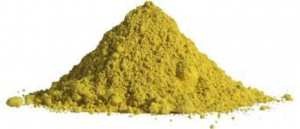Melissa Clough - BASF
Tier 3 standards are coming into effect in 2017 and are aimed at reducing sulfur
in gasoline, ultimately to reduce the impacts of motor vehicles on air quality and public
health. Tier 3 modifications can be made in a refinery by capital investments, via either pre or post hydrotreating of the crude oil or naphtha cut, respectively. For refiners looking to avoid or delay capital expenditure, FCC catalyst additives offer an alternative route. FCC catalyst additives are also used during hydotreater outages.
Reducing sulfur in the naphtha cut off an FCC is an important consideration since 90% of the naphtha sulfur in a given refinery typically comes from FCC naphtha. The amount of reducible sulfur depends on whether or not the FCC feed is hydrotreated. With hydrotreated feed, the sulfur in the gasoline cut is typically lower, but the sulfur that remains is more difficult to remove (aromatic sulfur). On the other hand, unhydrotreated
feed contains higher sulfur but is easier to remove. Saturates, mercaptans, thiophenes, and alkyl thiophenes see good or reasonable conversion to H2S or coke with the use of an additive. Benzothiophenes, although present in lower quantities than other species,
have much lower conversion rates and are harder to remove. A sulfur reduction from benzothiophene of 15% or less is common with an additive.
Overall, when looking at the entire sulfur species in FCC naphtha, an average of about 20-40% reduction across the entire boiling point range can be achieved with gasoline sulfur reduction additives. Typical loading is about 15-25% of the base catalyst and can be synergistically combined with the base catalyst formulation to minimize activity loss via dilution effects. This presentation will discuss recent testing with
gasoline sulfur reduction additives and FCC unit examples.







